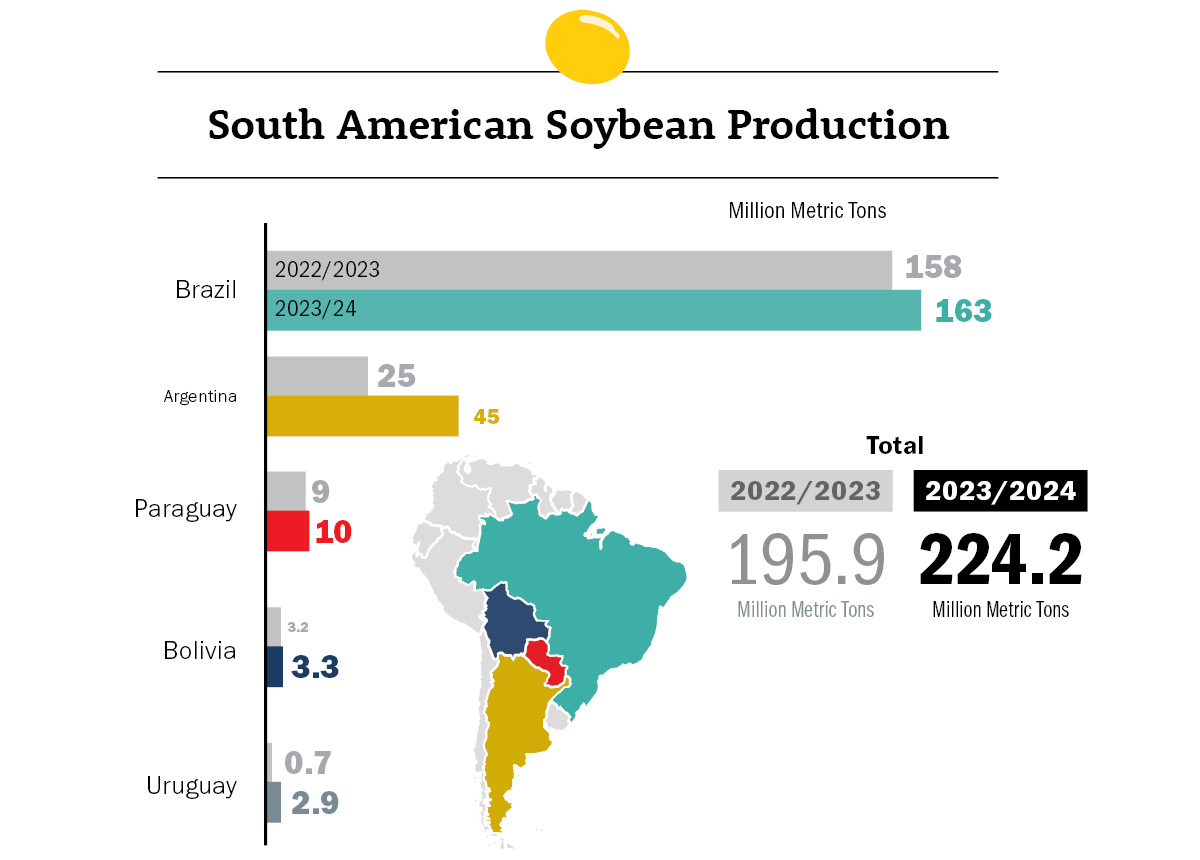El Nino's Effect on Crop Prices

A rebound in South American crops has been anticipated by traders for a long time. The focus for months has been the “big” crop coming in the southern hemisphere and the competition U.S. soybean farmers could suffer.
Recent WASDE reports had assumed another record Brazilian soybean crop and Argentina returning to normal, but the El Niño weather pattern might have something to say about that.
El Niño causes the waters of the Pacific Ocean to warm and normally has an impact on the world’s climate. In Brazil, it usually brings a drier climate in the north and northeast and rain in the south. The effect in Argentina is a wetter year beginning with a wet spring (Sept. to Nov.)
The table below reflects the potential for an increase of 31 million metric tons (mmt) or about 1.2 billion bushels. WASDE has recognized the importance of the U.S. losing exports to a whopper crop by lowering U.S. exports this year to 1.76 billion bushels. This is compared to the past three years of exports at 2.26, 2.16 and 1.99, respectively.
Yet when supplies from all sources are put into WASDE’s global supply and demand tables, U.S. carryout is seen as 245 million bushels or about 6.5 mmt. The importance of El Niño becomes apparent.

Change in Perspective
Total 2023/24 production in Brazil and Argentina is seen at about 211 mmt. The U.S. carryover of 6.5 is only 3% of that total. If Brazil would have an El Niño production comparable to last year’s record, the 7 mmt shortfall would offset the U.S. total carryover. Suddenly, the perspective changes.
Sources in Brazil say crop potential has already been reduced by 2 mmt to 3 mmt. Further implications for replant and delayed planting suggest supplies out of Brazil will, at a minimum, be delayed.
As a result, this delays the country’s safrinha corn planting and affects their yield by 2 mmt to 3 mmt as well. Reductions due to too wet and too dry conditions is yet to be determined but is currently on the radar of global traders.
Market psychology is a big part of price discovery on a day-to-day basis. Price adjustments come quick and pronounced as well. While corn and wheat gave back all their gains realized in the two-year bull market, soybeans managed to lose only 50%.
The reason is there are only two producers who share nearly 100% of exportable supplies. For corn, there are four: the U.S., Argentina, The European Union (EU) and Ukraine. There are seven major producers of wheat: the U.S., Canada, Ukraine, Russia, EU, Australia and Argentina with India as a smaller exporter.
Generally, when a major exporter has a problem with exportable supplies, other players make up the difference. Everyone grows some wheat, but most must import some. With two big exporters of soybeans, the implications are huge, and a reduction in exportable supplies by one can significantly affect price.
Market perception (psychology) can be under appreciated when it comes to price discovery.







